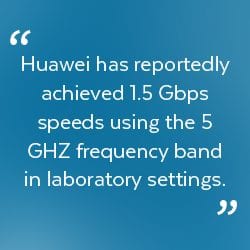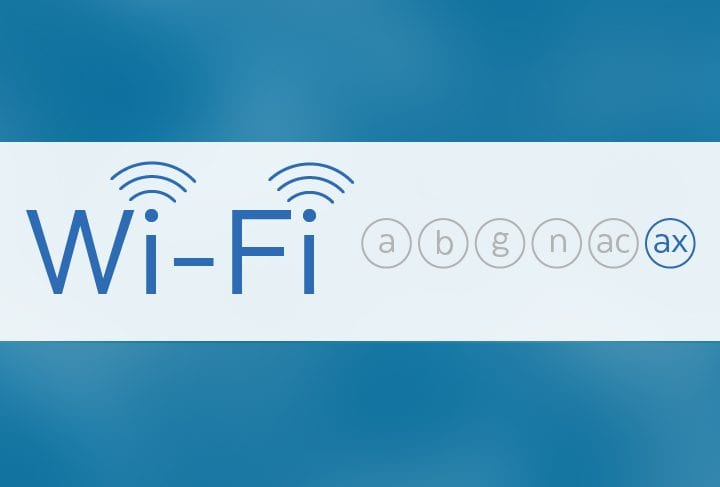 802.11acintroduced gigabit speeds to the 802.11 body of Wi-Fi standards, but the Wi-Fi alliance has already begun exploring 802.11ax, a follow-up standard that is promising to deliver double-digit gigabit speeds. The new standard is led by Huawei and the Wi-Fi Alliance. Huawei has reportedly achieved 1.5 Gbps speeds using the 5 GHZ frequency band in laboratory settings. Market Wired estimates more conservative figures predicting real-world 802.11ax speeds to surmount to 2 Gbps. FierceWireless anticipates that “the speed would not necessarily be delivered to an individual smartphone or tablet, but it does set the stage for possible gigabit speeds direct to devices.”
802.11acintroduced gigabit speeds to the 802.11 body of Wi-Fi standards, but the Wi-Fi alliance has already begun exploring 802.11ax, a follow-up standard that is promising to deliver double-digit gigabit speeds. The new standard is led by Huawei and the Wi-Fi Alliance. Huawei has reportedly achieved 1.5 Gbps speeds using the 5 GHZ frequency band in laboratory settings. Market Wired estimates more conservative figures predicting real-world 802.11ax speeds to surmount to 2 Gbps. FierceWireless anticipates that “the speed would not necessarily be delivered to an individual smartphone or tablet, but it does set the stage for possible gigabit speeds direct to devices.”
Multi-Carrier Support with OFDMA
The new speed is not expected to achieve official ratification until 2019. 802.11ax will utilize the 2.4GHz and 5GHz frequency currently in use, but FierceWireless also predicts the possibility of utilizing 1 GHz and 6 GHz. 802.11ax will also utilize a MIMO-OFDMA (Multi Input Multiple Output Orthogonal Frequency Division Multiple Access). In contrast to 802.11ac’s OFDM (Orthogonal Frequency Division Multiplexing) where each subcarrier is reserved for one user, OFDMA (Orthogonal Frequency Division Multiple Access) has the capacity of supporting multiple users per subcarrier. Both 802.11ac’s OFDM and 802.11ax’s OFDMA rely on an orthogonal signal structure that turns signals in right angles to allow for a closer stacking of the signals and allow for a simple de-multiplexing as explained by Extremetech. However, unlike OFDM, OFDMA can talk with multiple stations simultaneously. Chuck Lukaszewski, Vice President of Wireless Standards and Strategy at Hewlett-Packard Enterprise has confirmed that both OFDMA and MIMO will be able to support bi-directional downlink and uplink transmission.
802.11ax Will Make Multi-Gigabit Ethernet Essential
802.11ax will continue to preserve backwards compatibility with older 802.11 models. These faster Wi-Fi standards will put a strain on Gigabit Ethernet and will continue to drive the demand for 2.5 Gb and 5 Gb Ethernet, also known as Multi-Gigabit Ethernet. The MGBASE-T Alliance and NBASE-T alliance have worked together to drive the finalization of Multi-gigabit Ethernet. Multigigabit Ethernet, known as IEEE’s 802.3bz study group is expected to finalize in 2016. Click here to learn more about the 802.3bz standards and the alliances driving the development of the standard.
Current customers have access to 1000BASE-T Ethernet as well as 10GBASE-T using CAT6A cable wiring. Even 802.11ac Wave 2 adopters need to update their infrastructures to be able to properly achieve the high-speed rates of 802.11ac.
Looking for 802.11ac Wireless Access Points? Click on the link below!
Related Posts:
- Preparing for the 2nd Wave of 802.11ac
- Experience 802.11ac Speeds with the MZZ344HV Dual Band WAP
- Experience Our High-Speed VX-AP1AC 802.11ac Outdoor Wireless Unit



